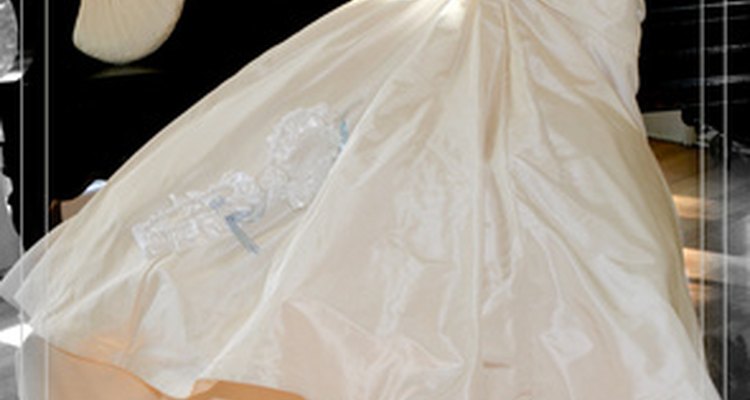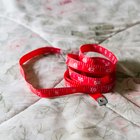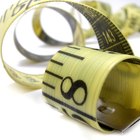
A woman can choose better-fitting clothes by knowing her exact measurements and choosing the appropriate size that corresponds to those measurements. However, most women's measurements do not fall into one size category, since bodies are not always proportionate. For this reason, always taking the time to try on clothing is advisable. Most likely, you will choose the size that the majority of your measurements, such as bust, hip and waist, fall into. For women who are extremely disproportionate, such as those who have an extremely large bust but a small waist and hip area, buying clothes that fit the largest part of you and having the rest of the garment altered to fit your other measurements is your best solution for perfect-fitting clothes.
Raise the size of a garment such as a dress or blouse by one size with every inch of bust size. Remember that sizes for women increase by increments of two. For example, a 34-inch bust is typically a size 4, a 35-inch bust is a size 6, a 36-inch bust is a size 8 and a 37-inch bust is a size 10.
Adjust a woman's size for a dress, pair of pants or skirt by going up one size for every inch of waist measurement. For example, a 26-inch waist is a size 4, a 27-inch waist is a size 6, a 28-inch waist is a size 8 and a 29-inch waist is a size 10.
Calculate a woman's size for a dress, pair of pants or skirt by going up one size for every inch of hip measurement. For example, 36-inch hips are a size 4, 37-inch hips are a size 6, 38-inch hips are a size 8 and 39-inch hips are a size 10.
Determine whether the woman is best-suited to regular or petite clothing based on her height. Regular clothing is meant for women from 5 feet 4 inches to 5 feet 8 inches tall. Petite clothing is meant for woman under 5 feet 4 inches. There are also tall or short clothing categories for someone extremely tall or extremely short.
Related Articles

How to Size Boys' Clothes

What Is the Cup Size of Someone With a ...

How to Estimate Pants Size Using Height ...

How to Measure Women's & Girls Clothing ...

How to Measure a Man's Suit Size

How to Take Measurements for Tailoring

How to Convert Men's Clothing Sizes to ...

How to Measure Your Pant Size in Juniors

How to Make a Plus-Size Person Look ...

What Does Bust Size Mean?

How to Measure a Man's Shirt Size

How to Measure Bust Size

How to Decrease the Padding in a Bra

What Is the Average Breast Measurement?

How to Size Pants

Clothing Styles for Overweight Teens

How to Flirt With a Girl in School

How to Measure Body Width

How to Size a Bathrobe

Difference Between Hourglass Figure & ...
References
Writer Bio
Michelle Barry graduated from Salve Regina University with a Bachelor of Arts in English. Since then, she has worked as a reporter for the Wilbraham-Hampden Times, an editor for Month9Books and Evolved Publishing, editor and has spent the past seven years in marketing and graphic design. She also has an extensive background in dance.
Photo Credits
The Dress image by Jenn from Fotolia.com